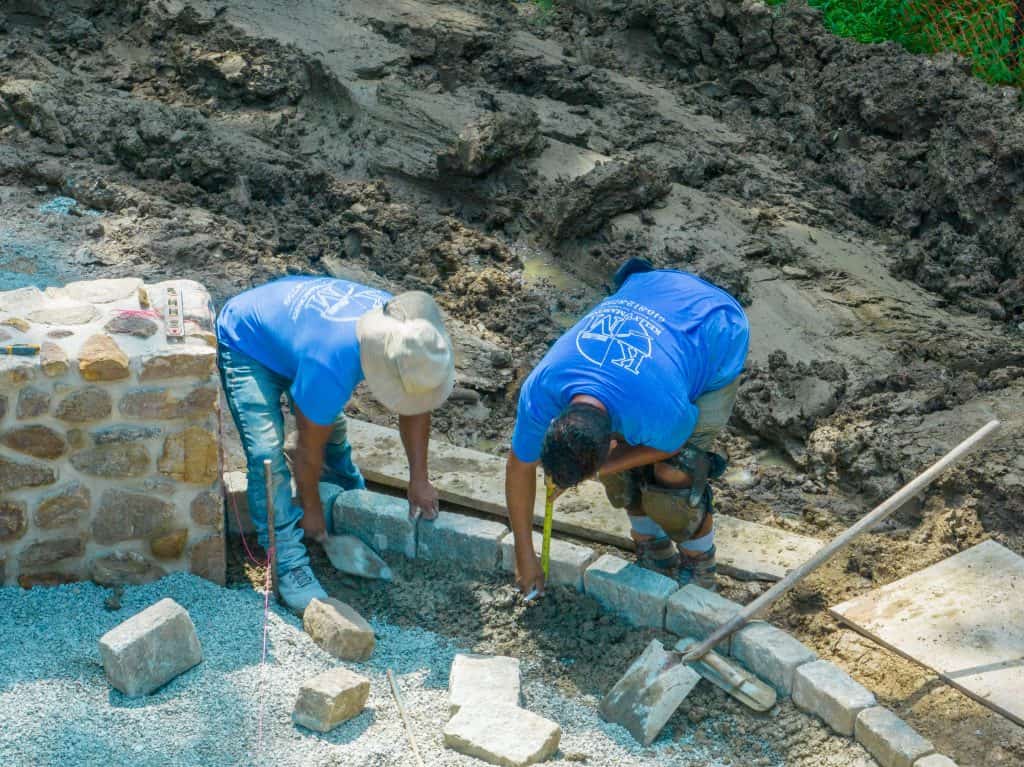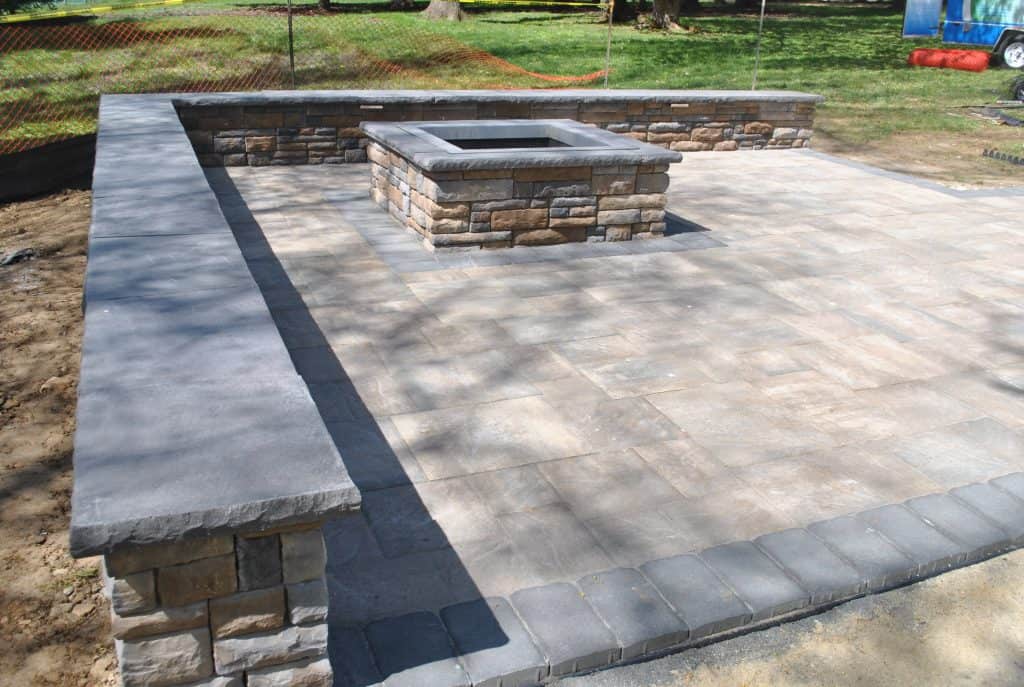What are Sitting Walls?
Sitting walls are a type of garden wall that is low to the ground and typically used for seating. They can be made from a variety of materials, such as stone, brick, concrete, or wood. Sitting walls can be straight or curved, and they can be either freestanding or part of a larger structure, such as a retaining wall.
Sitting walls can be used in a variety of ways, such as to create additional seating in a garden, to define a space, or to provide privacy. They can also be used to create visual interest or to accentuate other features in a garden, such as a water feature or a garden bed.
This comprehensive guide will teach you everything you need to know about sitting walls, including how to design them, what materials to use, and what functions they can serve.
Designing your Sitting Wall
Designing your sitting wall will depend on its location and purpose. If it is located near a seating area, such as a patio, then the height of it should be at least 18 inches high for comfortable seating. If it is part of a retaining wall, then it will need to be designed with safety and durability in mind.
When designing your sitting wall, consider the materials you will use. Both brick and stone are popular choices, as they are strong and durable and can withstand weathering. Stone walls are also available in a variety of colors and textures, which can be used to create a unique aesthetic. If you are looking for a more modern look, concrete blocks are a great option.
The shape of your sitting wall should also be taken into consideration. Straight walls offer a simple and classic look, while curved walls create visual interest and are a favorite of landscape designers. When designing curved walls, make sure to leave room for curves and radius edges so that the wall looks natural.
Finally, consider the function of your sitting wall. Will it provide additional seating? Is it part of a larger structure such as a retaining wall? Is it purely ornamental? Asking yourself these questions will help you create the perfect sitting wall for your space.

Common Materials Used for Sitting Walls
Brick and stone are the two most common materials used to build a sitting wall.
Brick: Brick provides an attractive and durable material for sitting walls. It’s available in a variety of colors, textures, and shapes and is easily molded into any design. Plus, it’s easy to maintain, making it a popular material for homeowners.
Stone: Stone is also a favorite material for sitting walls. It’s stronger than brick and can be used to create a more contemporary look with its various tones, shapes, and sizes. Stone sitting walls are also low maintenance and are often the preferred choice for larger retaining walls.
Concrete Blocks: Concrete blocks are a great choice if you’re looking for a more modern aesthetic. They come in a range of sizes and shapes and can be used to create dramatic curves and textures. Plus, they’re strong and durable, making them an ideal choice for retaining walls.
Whatever material you choose for your sitting wall, make sure it is suited to its purpose and location. Always consult with a professional before beginning any DIY project.
The Function of Sitting Walls
The function of a sitting wall is two-fold. It can act as an attractive addition to your landscape design, and also provide structural support for your backyard. Sitting walls can help retain soil, protect property from flooding and erosion, and also serve as terraced steps for slopes or stairs.
The same materials that are used to build a sitting wall can also be used as low-level seating. This makes them a great addition to any backyard design: they add a visual element while providing additional seating.
In addition, a sitting wall is a great way to define outdoor spaces, such as outdoor kitchens and porches. It’s a great way to separate the space while creating a border around the area.
Finally, a sitting wall can help create a softer edge around a pool or deck, making it safer and more inviting.

Building your Sitting Wall
Building a sitting wall is easy, but there are several crucial steps that should be followed to ensure your wall is structurally sound.
1. Site Preparation – The first step is to prepare the site for construction. This includes determining the wall’s location and level, as well as clearing away any debris and leveling the soil. It is important to also measure and mark the wall’s dimensions to ensure a precise build. Determine the length and height of your wall and mark the area where you want to build it.
2. Foundation – The sitting wall requires a firm foundation to prevent it from shifting or settling. This can vary depending on the material you are using, but it is generally recommended to dig a trench at least 4-6 inches deep and fill it with a 1:2:3 concrete mix.
3. Materials – The most common materials used to build a sitting wall are brick, stone, and concrete. Be sure to select the correct type of material based on the area you are working with and the needs of the wall.
4. Building – Once the materials are selected, it is time to begin building your wall! Start by laying the foundation and then use a trowel to carefully spread and level the cement. The next step is to set each brick or stone, making sure to use mortar and level each layer. Lastly, fill in any gaps with concrete and brush away any excess dust or dirt.
If you desire a more a complicated sitting wall design, consider hiring a professional to ensure the wall is structurally sound.
Maintenance and Repair Tips
Now that you have built your sitting wall, it’s important to know how to properly care for it. Maintenance and repair tips for sitting walls will help keep them looking great for many years to come.
1. Prevention – Regularly clear away any leaves, dirt, or other debris that has built up on the wall. This will help maintain its aesthetic and can help prevent water from seeping into any cracks or crevices. Additionally, it’s important to regularly check for any signs of structural damage, such as bulging, cracking, or crumbling.
2. Sealing – As your sitting wall is exposed to the elements, it is important to regularly reseal it with a water-resistant sealer. This will help to protect the wall from moisture, weather, and other damage. Additionally, it is important to check the seal regularly to ensure that it is still intact and effective.
3. Repairs – If any damage to the sitting wall is noticed, it is important to make the repairs as soon as possible. Small repairs, such as filling in cracks, can be done with concrete repair mortar, while larger, more serious damage may require professional repair or completely replacing parts of the wall.
By following these maintenance and repair tips, you can ensure that your sitting wall stays looking great for years to come.

FAQs about Sitting Walls
Q: How long do sitting walls last?
A: With proper maintenance and repairs, sitting walls can last a very long time. The materials that are used, such as concrete and stone, are very strong and durable. Additionally, regular sealing will ensure that the wall remains water-resistant and protected from the elements.
Q: How often should I seal my sitting wall?
A: Depending on the type of sealer you are using, it’s important to reseal your wall every few years. This will ensure that it’s properly protected from moisture, weather, and other potential sources of damage. Additionally, it’s always a good idea to check the sealer regularly for any signs of wear and tear.
Q: What type of sealer is best for my sitting wall?
A: Most types of sealers will be effective for protecting your sitting wall. To determine the best type of sealer for your wall, it’s recommended to consult with an expert or a professional building contractor. They will be able to provide advice on which type of sealer will best suit your needs.
